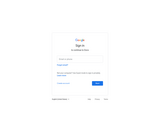
In this lesson, students make a solar bulb out of a plastic bottle and use it to demonstrate refraction.
- Subject:
- Science
- Material Type:
- Lesson Plan
- Provider:
- Science in School
- Date Added:
- 05/25/2018

In this lesson, students make a solar bulb out of a plastic bottle and use it to demonstrate refraction.

Students will research lighthouses of North Carolina using print and digital resources and create a digital presentation on the NC lighthouse of their choice. After studying basic electric circuits, students will use cardboard and Makedo tools to design and build a model of this lighthouse and wire it to light using a kit of electronic supplies. Students will showcase their final products with friends and family using digital photography, Google Presentations and a screencast video on Flipgrid or another platform of the teacher’s choosing. Students will submit a Seesaw documenting their experience with the Design and Engineering Process while building their lighthouse.

In this activity students will investigate magnets and what they attract through observation and discussion. Students will record their findings in a science journal.

Students can work in groups from 1-5 in order to design a race car using stick magnets as the energy source. Students are using their knowledge of magnetic energy to design a race car that can be pushed or pulled through a race course seeking the fastest time. Students will design their race car out of a set group of engineering/building supplies. Math can be incorporated as well in the design process.

Students experimentally measure the strength of a magnet and graph how the strength changes as the distance from the magnet increases, and as a barrier is built between the magnet and an iron object. This lesson is the second in a two-lesson series on magnets. Students should carry out many investigations in order to familiarize themselves with the pushes and pulls of magnets. By exploring magnets, students are indirectly introduced to the idea that there are forces that occur on earth which cannot be seen. This idea can then be developed into an understanding that objects, such as the earth or electrically charged objects, can pull on other objects. It is important that students get a sense of electric and magnetic force fields (as well as gravity) and of some simple relations between magnetic and electric currents.

This is the educator's guide for a set of activities that teach students about humans' endeavors to return to the moon. The emphasis is for students to understand that engineers must "imagine and plan" before they begin to build and experiment. Each activity features objectives, a list of materials, educator information, procedures, and student worksheets. Students should work in teams to complete the activities. Note: Activities do not align to all objectives that are listed; specific activities align to specific objectives.

Students work to build a dam that protects Salmon (fish) on the McKenzie River while creating hydroelectric power.

In this lesson, students learn about parallel and series circuits. They will also discover the similarities and differences between the two by constructing their own.

In this activity, students use two different metals and some sour, salty water to create an inexpensive battery.

Students will explore various properties of magnets.

This course was created by the Rethink Education Content Development Team. This course is aligned to the NC Standards for 4th Grade Science.

This course was created by the Rethink Education Content Development Team. This course is aligned to the NC Standards for 4th Grade Science.

In this slideshow, magnetism is explored. The resource illustrates the idea that magnetism is the property of attracting iron and a magnetic object's magnetic force is how strong that attraction is. Magnetic fields are the areas where the magnetic force will work. Magnets also have opposite poles, negative and positive and opposites do attract.

The Light unit helps students explore the properties of light - where it comes from, how it moves, and how it interacts with objects.

Students learn about adding a switch to a simple circuit, a series circuit, and how to read and draw schematics.

This informational text introduces students to solar energy's role in warming the Earth's land and water and to the fact that dark-colored surfaces absorb more of the Sun's energy than do light-colored ones. Students also read about how the decline in Arctic sea ice is changing Earth's energy balance. This version is a full-color PDF that can be printed, cut and folded to form a book. Each book contains color photographs and illustrations. The text is written at a grade four through grade five reading level.

In this activity, students make a qualitative conductivity meter with a battery, bulb, and foil.

In this activity, students make a wire spin about a magnet using the interactions of magnetism and electric current.

In this hands-on STEM lesson, students will learn the requirements of making an electrical circuit and will design a switch to control a circuit. They will also investigate the differences between series and parallel circuits. They will apply their knowledge in a final task to design and build a signaling device.

In this lesson, students will use common materials (ring-shaped cereal, thread, a wire clothes hanger, plastic comb, piece of wool, foam cup, and a large nail) to demonstrate how electrical charges attract and repel.